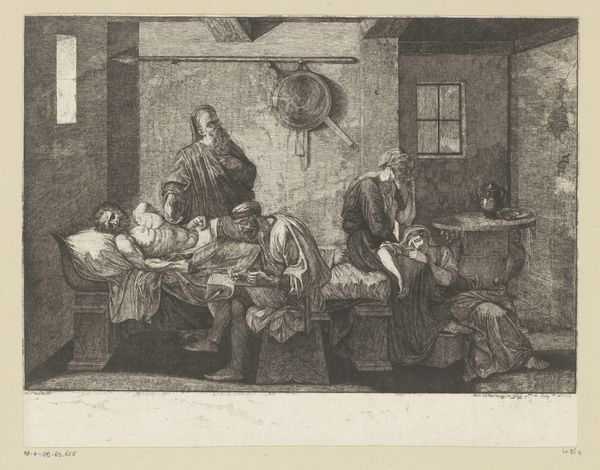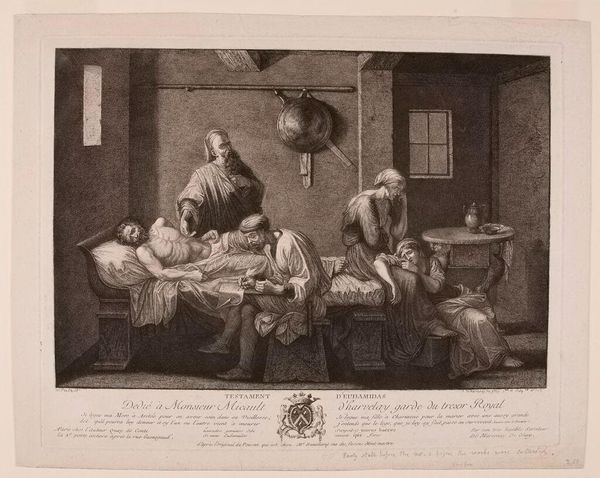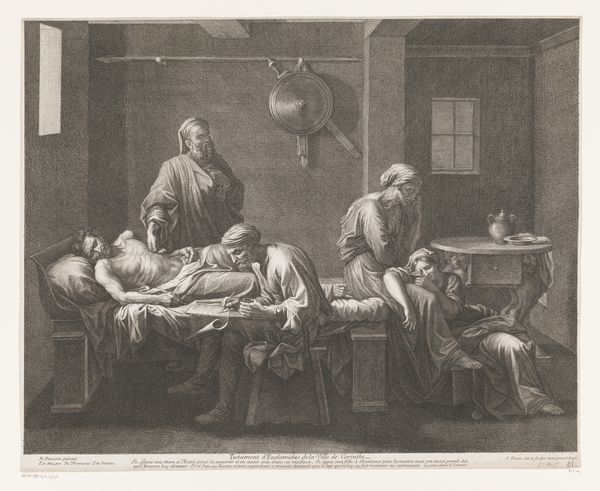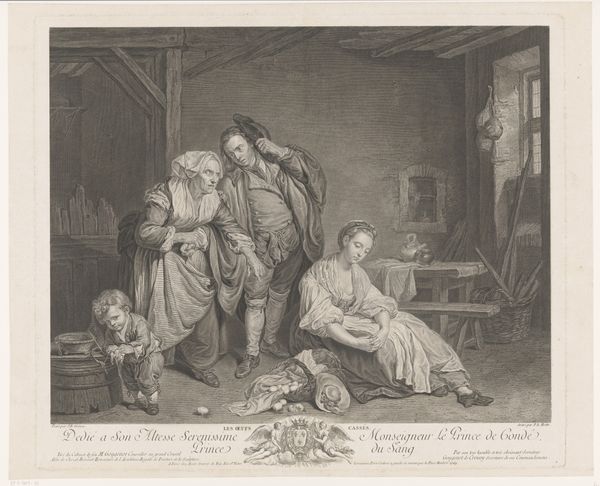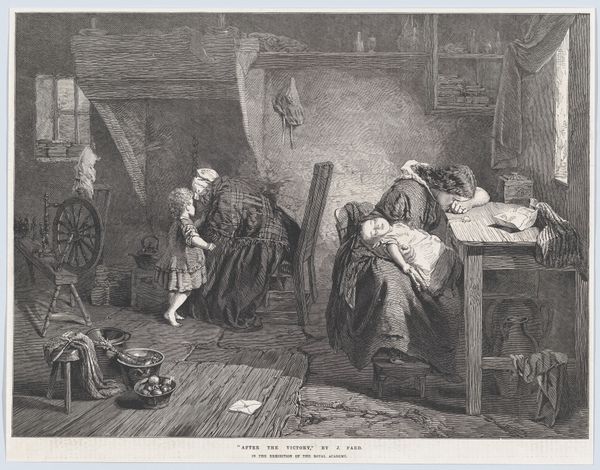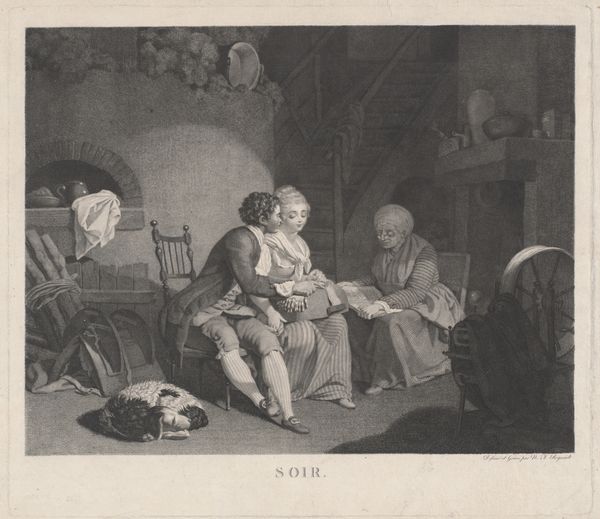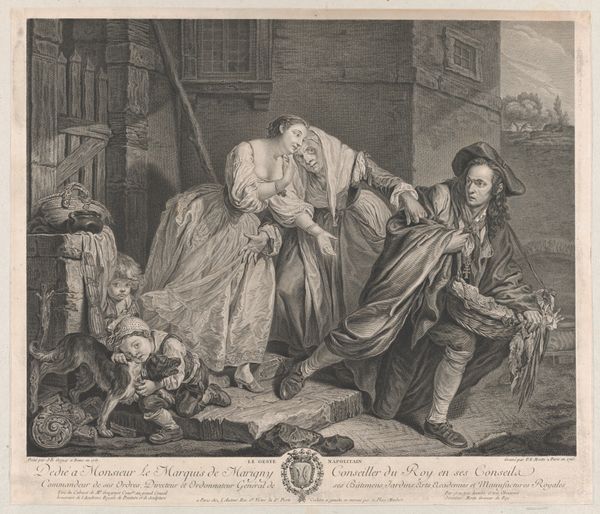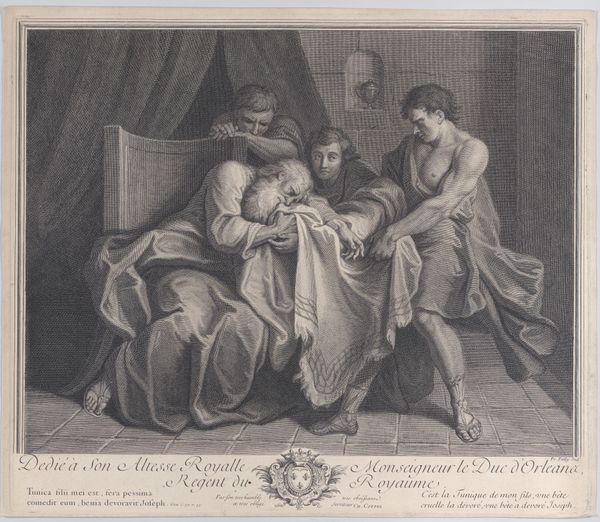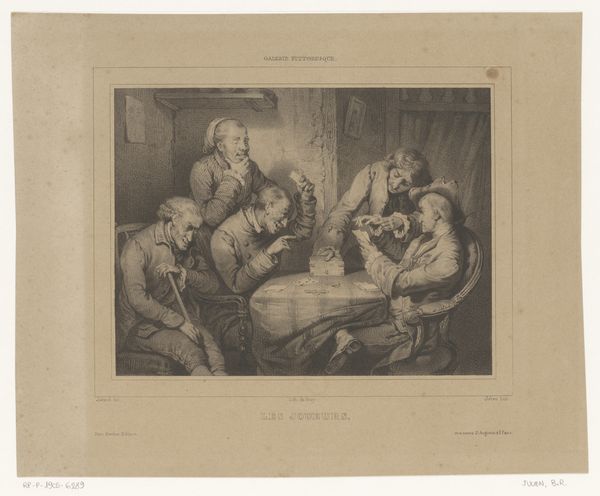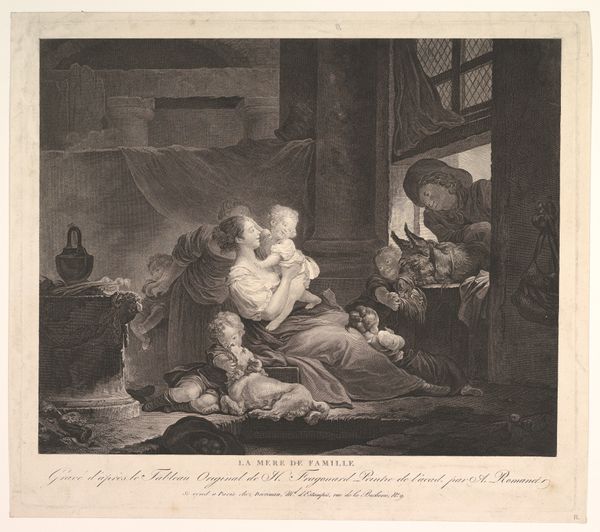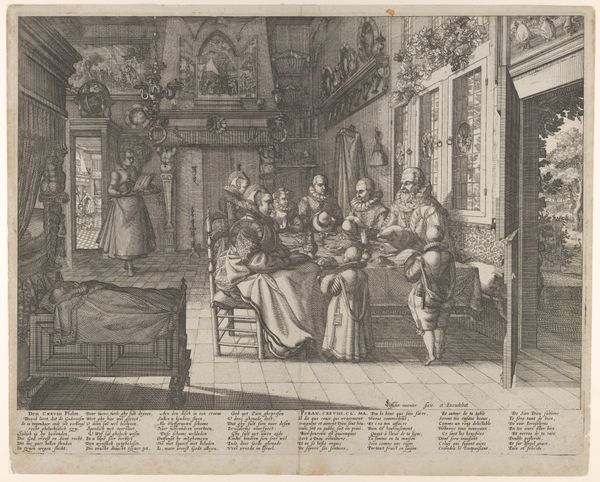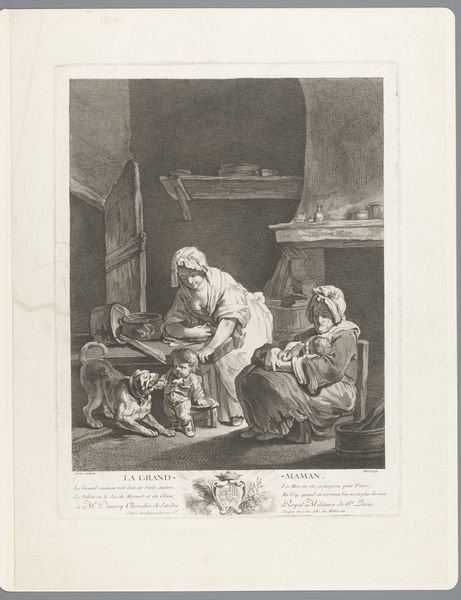
Dimensions: height 257 mm, width 324 mm
Copyright: Rijks Museum: Open Domain
This print was made by Antoine de Marcenay de Ghuy sometime in the late 18th or early 19th century. It depicts the Testament of Eudamidas, a story of classical generosity. How are we to interpret this scene of a dying man dictating his will? The answer lies in the visual codes and cultural references of its time. The artist, working in France, likely intended it to be seen as an example of civic virtue. But this was France on the cusp of revolution. One might wonder if de Ghuy was making a subtle critique of the existing social order. Was he using the classical past to hold up a mirror to the present? To truly understand this work, we need to delve deeper into the social and institutional history of 18th-century France. What role did art play in shaping public opinion? How did institutions like the Royal Treasury influence artistic production? These are the questions that social art historians seek to answer, using everything from archival documents to philosophical texts to illuminate the complex relationship between art and society.
Comments
No comments
Be the first to comment and join the conversation on the ultimate creative platform.

